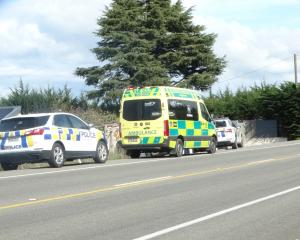
Prof Richard Walter, the head of anthropology and archaeology at the University of Otago is one of the project’s key leaders.
He said analysis showed the founding North Otago community used tools they had arrived with, such as adzes, very well and recycled them when they broke. But analysis of stone flakes also showed they went from using high-quality stone, brought in from distant sources, to using a local stone that was of poorer quality.
This was despite the community’s wide-ranging links with other parts of the country.
"They started to use inferior grade local materials ... which wasn’t what I expected. We don’t know why ... but they weren’t looking at importing adzes. They were still importing other materials. We’ll figure it out, though."
The project to sort through the collection of nearly 10,000 stone tools, flakes and artefact fragments, found in a 30ha swamp at the Waitaki River mouth more than 50 years ago, started last year and was expected to take several years to complete.Prof Walter said the project was about 2% of the way through.
The project team was using the 1997 report on the Willetts Collection, prepared for the museum by Marianne Turner, as a key document.
"Working with this material we’re able to test some of Marianne’s ideas.
"What we want to do is work out the details of the stone industry here, what they were doing with the local stone and the imported stone."
The project was about understanding "human behaviour".
Glenavy’s Shane Te Maiharoa, formerly of Invercargill, was at the museum this week for what he called a "crash course" in how his wider forebears lived.
"I don’t know much about them. This is a great opportunity for me."
He said what the collection, heavy in adzes, showed him was that his ancestors were industrious.
"They didn’t muck around with these tools. They were not gentle on these tools. They went for it."
He got in touch with the research team after a relative told him about the project.
"I thought I’d represent the family."
The project is being conducted by the University of Otago, Te Runanga o Ngai Tahu, Waitaha Taiwhenua O Waitaki Trust and the museum.












